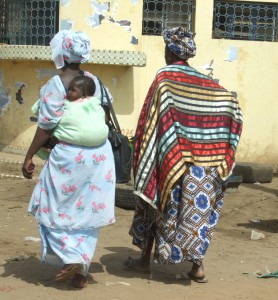
Recently I read a piece by Lisa Campo-Engelstein, PhD and Amanda Fleetwood, PhD arguing for the inclusion of low cost assisted reproductive technology (ART) centers in the Global South, a term used for developing countries in academic literature. They reason that ART services give women reproductive autonomy and can alleviate the stigma that infertility brings to women and their families. Specifically focusing on three low cost ART centers in sub-Saharan Africa (Sudan, South Africa and Tanzania), I wondered how these centers were accessible to the people they were meant to reach. How do we define “low cost” in areas were the average monthly take home pay is between $50-60, but the reduced treatment cost for ART is $300? How do we reach the people that need this service the most – the people that are unable to get to these centers due to a lack of infrastructure within their particular region? How do we engage the local population to take advantage of these services and monitor them when or if they do considering the immense stigma attached to infertility? All questions that need to be addressed, but at the heart of it is, “is there a need for these services and if so, how can we make it happen so that it reaches the people it was meant to assist?”
Certainly one can argue that by creating low cost ART centers we are only treating the symptoms of a much larger problem (infertility due to sexually transmitted diseases and poor healthcare services), but regardless of this debate, it doesn’t detract from the fact that there are still couples suffering from infertility that need reproductive choices. Taking that a step further, in many countries umbrellaed into the term, “the Global South,” children are so highly valued that a woman who does not produce any children will very likely suffer a stigmatization that devalues her status in the community and can lead to more extreme conditions such as ostracism and violence in certain areas. It’s also important to note that in most cases women are blamed for infertility issues, whether or not this is actually the case, so by giving them reproductive options you are facilitating women’s autonomy in the public as well as the private sphere.
I think there are a lot of variables that come into play when we begin to think about low cost ART centers; funding, access, resource distribution, eligibility, etc… Nonetheless, after careful reflection and an admitted “change of heart,” I believe that if implemented with prevention strategies and the mission to help those most in need of this service, it will prove to be an incredible resource for women (and men) in the Global South. For more information on ART and the Global South, please read, “The Impact of Infertility: Why ART Should Be a Higher Priority for Women in the Global South,” in Oncofertility: Ethical, Legal, Social, and Medical Perspectives.

